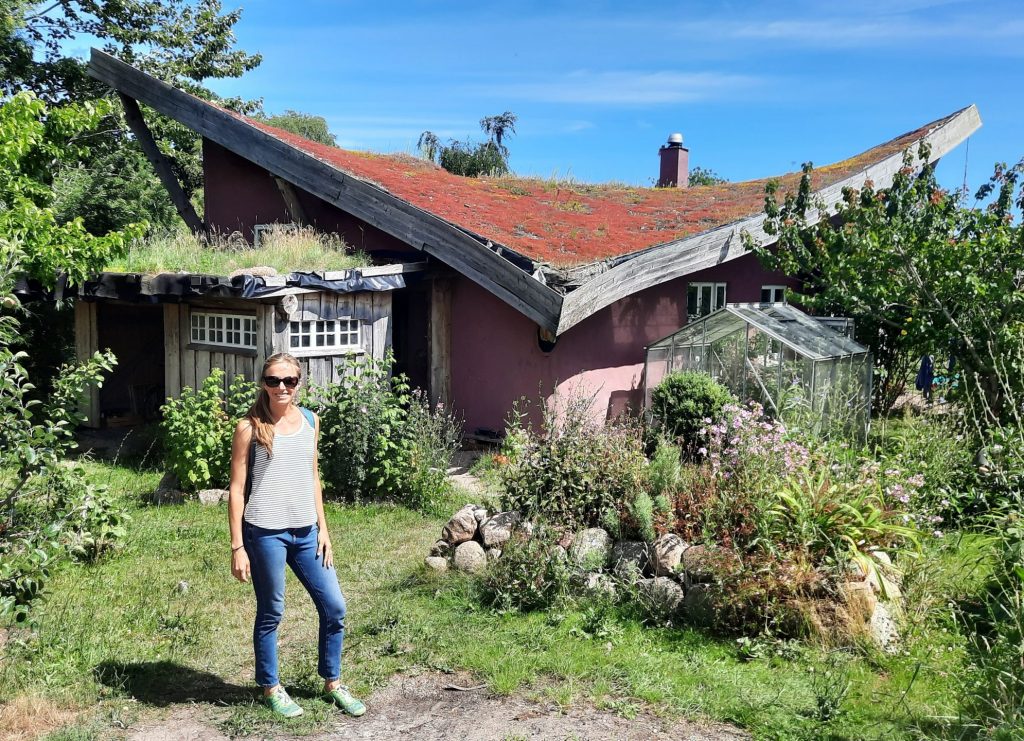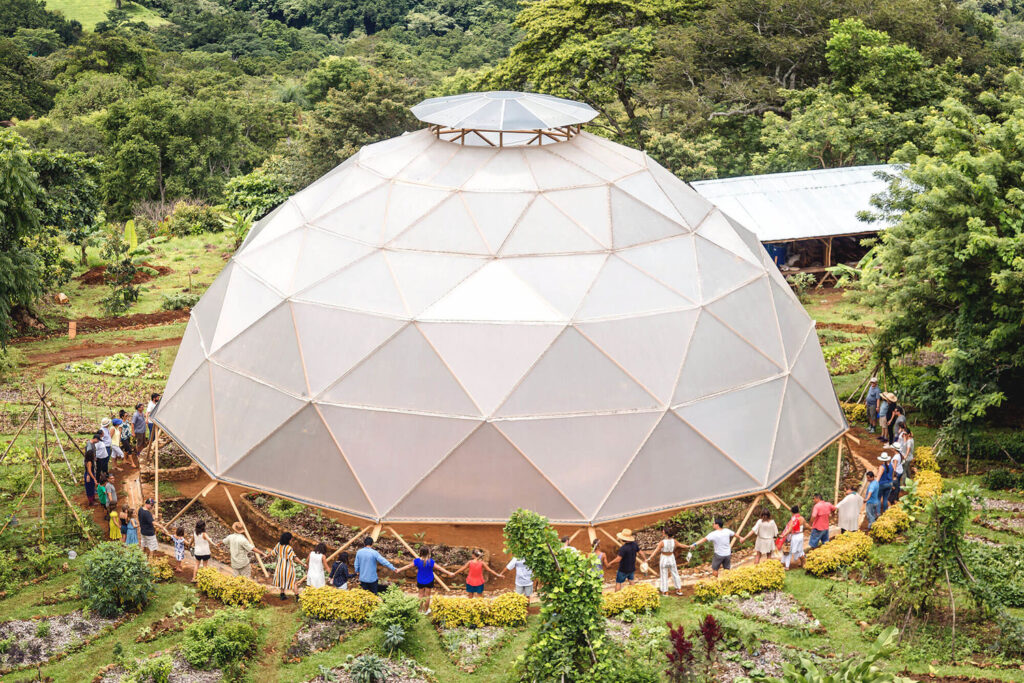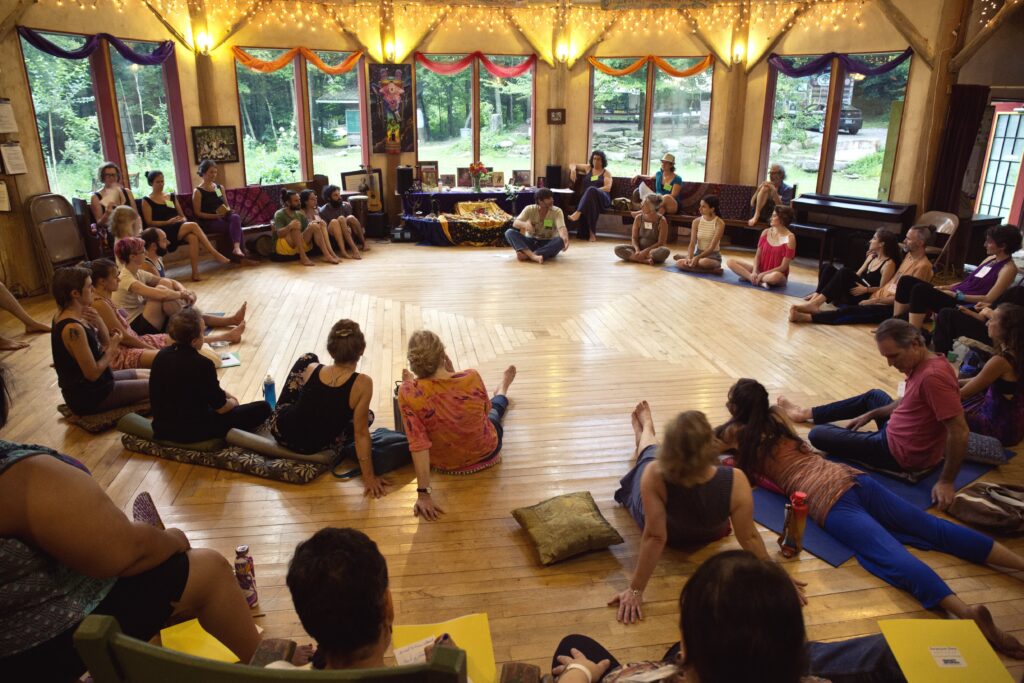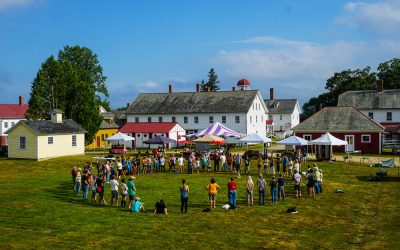Ecovillage, Coliving, Permaculture, Tiny House, and More Types of Intentional Community

Ready to settle into a tight-knit neighborhood of like-minded friends? Or gain companionship as you age? Or have the support of a village while raising your little one? Or become part of a solution to the world’s pressing problems?
We come to community for many reasons. The journey will look different for each of us. That said, there are some common steps or stages you’ll likely move through on your search for an intentional community to call home.
Not sure what an intentional community is? Start here to learn about the thousands of communities around the world where people are choosing to do life a bit differently, to prioritize connection with their neighbors over the individualist pursuit of more stuff.
Not sure if you should join a community or start one? Most of you will still want to read this article, because joining a community is a heck of a lot easier than trying to start one, but for some of you it is a path worth considering. Here’s a guide to determining whether You Should Join or Start an Intentional Community.
Then, for those who know about intentional communities and now want to learn how to find the one for you… here are six steps to get you there.
6 steps to community:
- Determine what you want to find in an intentional community
- Know what type of intentional community you are looking for
- Clarify where you want to research, visit, or join an intentional community
- Use online intentional community directories and search tools
- Contact and visit intentional communities
- Evaluate communities to find your forever home
1. Determine what you want to find in an intentional community
The first step to find an intentional community is to know what you want to find.
Do you envision a group of back-to-the-landers enjoying the simple life with home-grown food and fresh air? Or are you looking to join a collective of urban activists striving to make the world a better place? Or how about a quiet neighborhood of caring friends and families where you can share in meals, games, and thoughtful conversation?
Much of the process of finding a community involves finding out about yourself.
What’s important to you and how would those values be reflected in your ideal community?
Feel free to write, draw, or muse with a friend on your answer to that question. It’s key to getting to where you want to go.
As an additional step, start crafting Your Community Wishlist to fine-tune your community vision. This will serve as your personal compass as you go on to navigate the search process.
Whatever your community vision, getting clarity on exactly what you want will aid you tremendously later on. No guarantees that your exact vision exists! But at least you will know where the gaps are and where you have the willingness to compromise.

2. Know what type of intentional community you are looking for
Intentional communities include a wide variety of types. There are ecovillages, agri-hoods, housing co-ops, tiny house villages, cohousing, spiritual centers, coliving spaces, kibbutz, homesteading communities… just to name a few.
Each community is as unique as the individuals who make it up, but there are some defining characteristics depending on the broad category the community fits into. Below are steps to learn about the types and which is right for you.
Take the Community Type Quiz
Answer a few simple questions and the free Community Type Quiz will point you in the direction of one of the five most common types of intentional communities. The quiz is a great starting point if you are new to the world of intentional communities. Its questions are designed to tease out your values, your lifestyle, and what’s important to you that would align with a specific type of community. After taking the quiz, you’ll be sent a Community Types Guide that provides real-world examples of your community type as well as the other most common types.
Review the 15 common types of intentional communities
Dig deeper into the community types by reviewing the 15 Common Types of Communities. These are the terms and phrases you will see if you spend time searching any online community directory. It’s good to get a handle on the terminology so you can more quickly determine if a particular community type is of interest to you or not.
Sign-up for an intentional community matchmaking session
If you are still unsure about your community type or if you just want to fast track the process by getting a direct answer on what’s a fit for you, sign-up for a Community Matchmaking Session. You’ll get a custom list of recommended communities specific to your interests, ideal location, and ideal community vision. Get your questions answered and walk away with clarity, as well as on-going support as you start to visit communities.

3. Clarify where you want to research, visit, or join an intentional community
There are intentional communities in nearly every US state and in most regions of the world. Getting a handle on where you want to live (or take your next roadtrip) is an important factor in your search process. This is the search criteria that will most often limit or expand the options available to you.
For a small number of you, you’ll say that the location truly doesn’t matter. The values and vibe of the community are the most important. You can go anywhere. Enjoy your freedom, friends, and start roaming!
For the rest of us, read on…
Carefully consider the following questions:
- What’s my ideal climate? Are there climates I want to avoid? Cold, humidity, dryness?
- Do I want to be close to a city or way out in the country? Driving distance?
- Are there relatives or friends who I want to stay in proximity to? Or avoid??
- Do I need to be close to a specific place for employment or can I work from anywhere? How much will the community be the source of getting my needs met?
- Am I staying in the country where I’m already a citizen or looking abroad? What’s the travel or immigration process look like in another country?
- Is any of the above realistic… really?
If it helps, you can use the above questions to create a pros and cons list for some locations under consideration.
Additional resources for determining where you want to live
When you are ready to more seriously consider a move to another part of the country or the world, these are helpful online resources:
- Cost of Living Calculator – Life in an intentional community is usually more affordable because there are a variety of expenses shared, ranging from garden tools to childcare. But! Unless you join a commune (or income-sharing community) life in capitalism requires money. This is a handy calculator for getting a handle on the living costs in different parts of the United States.
- Climate Impact Interactive Map – Unfortunately, unstable weather means we need to think about climate risks when determining where to live. This tool shows how the climate in US cities is projected to change within the next 60 years.
- Climate Risks by Community – A series of charts and maps showing how regions of the US will be impacted by a range of climate factors in the years to come: sea level rise, drought, extreme rainfall, etc. Choose wisely where you want to move!
- Costs of Living in an Intentional Community – An insightful article looking at the range of costs for living in a variety of community types.
4. Use online intentional community directories and search tools
There are a variety of intentional community maps and directories searchable online.
Most people looking for communities in North America will use ic.org/directory, a database maintained by the Foundation for Intentional Community. Other popular community directories include cohousing.org/directory (for cohousing communities in the US) and ecovillage.org/ecovillages/map (for ecovillages around the world).
For a more comprehensive list, check out the List of Intentional Community Directories and Maps. It’s handy if you are seeking something more specific.
Below is further instruction for how to use the communities directory on ic.org, since it is the most frequently used by readers.
How to use the Communities Directory at ic.org
Head to ic.org.org/directory. Simply type into the search bar above the map a keyword for the community type or location you want to find. For example, “homesteading” or “tiny house”. There will be a scrollable list view of results. Or you can move around on the map and click on the icons to see individual communities.
You can also use the advanced search tool. However! Only put in or select a small number (2-4) criteria at a time. Don’t fill in all the search parameters or nothing will come up.
Below is a video showing how to use the search tools on ic.org and other useful features for finding a community, including the classified ads.
And if you aren’t good with tech or just like flipping through a book to learn about communities, there’s a print version of the directory. It’s a little dated at this point, so you’ll want to double check before contacting any communities found in the book. But there are useful charts and graphs that make the book worthwhile even if not fully up-to-date.
Save your searches and stay organized
It’s easy to get overwhelmed when researching the many intentional communities out there. None of the online search tools are very sophisticated, so find a way to save your searches. Community seekers will often create a document listing their favorites or even a spreadsheet to organize the communities with columns for things like location, what they like, don’t like, and website or contact info.
5. How to contact and visit intentional communities
This should go without saying, but always, always contact a community before visiting. Never just show up uninvited. Remember that these are people’s private homes, not tourist destinations!
There is much to say about how to best plan your community visit, what to expect, how to be a great guest, what to pack, etc. Refer to the full guide on How to Visit Intentional Communities for more and read on for the basics…
About visiting intentional communities
Most communities are open to visitors unless otherwise noted on their directory listing or website. Most larger and more established communities have specific programs for visitors, such as a monthly tour, experience week, volunteer programs, or other workshops and retreats. Their website will detail what opportunities are available.
For smaller and newer communities, your visit will likely be arranged on a case-by-case basis. You’ll need to work with them to find a mutually suitable time for your visit.
Some communities are not open to visitors or only open during certain times of year, such as the warmer summer months. Some communities have overnight accommodations in the community, for some (especially cohousings) it’s a guest room, while for others it is a campsite. Others have no overnight accommodations, but are open to day visitors.
Visit a community as you would someone’s private home. Be respectful, follow the rules, bring a thank you gift, clean up after yourself, ask if it’s okay to take photos or go in certain areas. Don’t expect everyone to roll out the red carpet for you. Folks in community have busy lives too. Do read the How to Visit Intentional Communities guide for more.
During and after the visit, make space for quiet reflection on the experience. Make multiple return visits (if you can) to be sure you didn’t just catch them on an off-day the first time.
How to contact an intentional community to ensure you get a positive response
Keep in mind that most communities receive many inquiries from people like you who are curious or want to visit. It could be someone’s full time job at a community just to respond to all the inquiries! But too often, this isn’t someone’s job. They are a volunteer who is trying to keep up with the communication while juggling whatever else is going on in their life and community.
Be kind to them and keep your message brief. Keep it specific and friendly. Here’s a Template for Contacting a Community for guidance.
If you feel the need to share more about yourself, link to your website or social media account, or attach a separate document.
Sadly, you may never hear back from a community you were excited about. Wait a week and then try again, or try a different method. Call if you emailed them the first time. If there are still crickets after that, let it go and trust it wasn’t meant to be.
There could be a whole variety of reasons why a community doesn’t respond that have nothing to do with you and your message. (Conflict in the group, changing of roles, closing to visitors, etc.) But just in case, review your email with a critical eye. Do you sound like someone who will bring value to their group? Does your language mimic the kind of wording on their website? Are you being too eccentric off the bat? Adjust accordingly and try contacting another place.
Never fear, there are more communities in the sea!

6. Evaluate communities to find your forever home
Finding a community can be equated to finding a romantic partner… only, instead of one person, you are building relationships with many people all at once! Much like the throws of a romantic relationship, a community relationship can involve flings, courtship, heartbreak, break up, or lasting union.
How to “date” communities
In the early days of your search process it’s important to go on many “dates.” Go visit as many communities as you can, even the ones that aren’t on the top of your list. Get a feel for what’s out there. This way you will:
- Learn more about what you like and don’t like in community
- Have a better sense of comparison for when you do find the one for you
- Gain community experience, which you can add to your resume
Some people find that they love the journey of visiting communities so much that they just want to keep on visiting for the richness of it. For others their path veers into new directions based on all the life experience gained. A few find that nothing quite feels like a fit and they decide to try to start a community or go back to life outside a formal communal living. Others find that the community they love has a waiting list, so patience is required.
All could be possibilities for you.
And some people, after weeks or years of searching, feel as if they have found something worth investing more time into. They have found a relationship worth cultivating. A community to call home.
Then the real adventure begins!
Time to commit! What the intentional community membership process looks like
Deciding on a community to join is as much an art as a science. We all have different ways we go about making big decisions. Some of us like to jump in with two feet, others carefully psychoanalyze every nuance of the options, and others rely on long conversations with trusted friends.
Be sure to return to your notes from your past community visits and ask the current residents as many questions as you need to feel comfortable with the decision. Keep in mind that they will be asking you questions too! This relationship is a two way street! You both will need to feel like it is a fit.
Membership processes in intentional communities all look different, but the foundation (just like any relationship) should be transparency, trust, and crystal clear communication, especially when any money or housing is exchanged. Make sure you understand exactly how you join the community, expectations while living there, and how you leave.

Your journey into intentional community
Of course, finding a community doesn’t happen in six linear steps. The road is winding and sometimes we don’t end up where we want to go. The secret is to enjoy the journey just as much as the destination.
And don’t feel you need to go at it alone!
Every day there are more and more community seekers just like you who are fed up with life as usual and ready to try something different.
The Community Finders Circle is where they come together to share resources, compare notes, and support each other.
Making the move into communal life can be a big life transition. It may involve:
- selling your current home
- hitting the road for weeks or months
- changing careers or retiring
- figuring out cooperative living skills
- navigating all new relationships
The process can be very exciting… and very stressful!
The Finders Circle is designed to maximize your confidence and minimize your stress. You’ll have a team of people supporting you to get into a community that’s the closest to your ideal as possible.. There are weekly activities to keep you on track with your goals, group calls, sessions with community leaders, templates, guides, and more.
Be in touch with questions about the program or my one-to-one matchmaking service.
Have you been on the search for an intentional community? Share with us how it is going. What do you hope to find? What lessons have you learned along the way?
Community Wishlist
Get the worksheet to help you find a community that’s a fit for your needs.


















How much is it to join?
Hi Judy, every community has different costs to join. You can learn about the prices to join communities and how affordability works in my mini-course: https://programs.communityfinders.com/offers/m6CA4PTL/checkout
This link from above doesn’t work. It took me to a list of U.S. Intentional Communities:
“ecovillage.org/map (for ecovillages around the world)”
Thank you for noticing this mistake, Joanna! Here’s the correct link: https://ecovillage.org/ecovillages/map/
Much appreciated 🙂